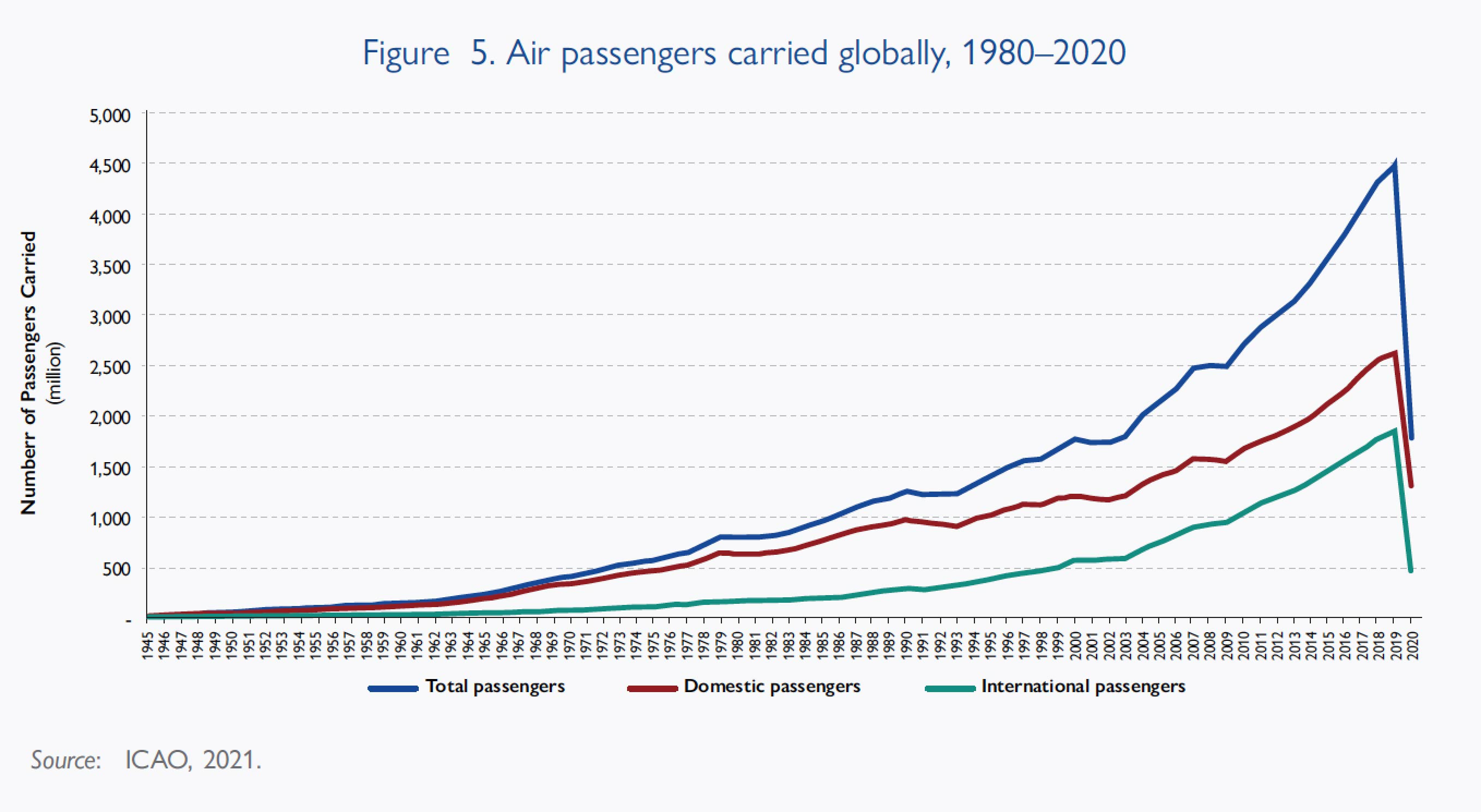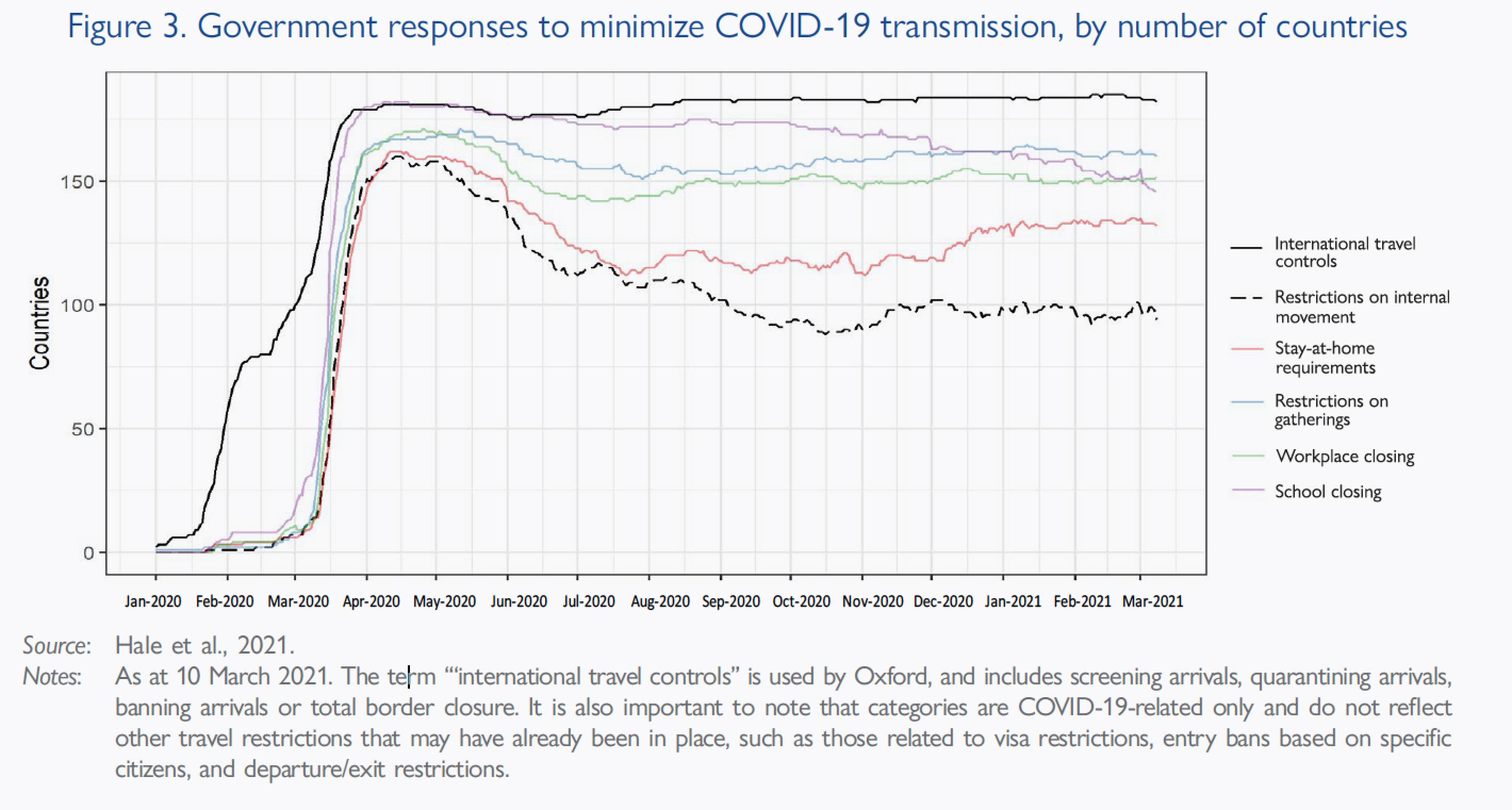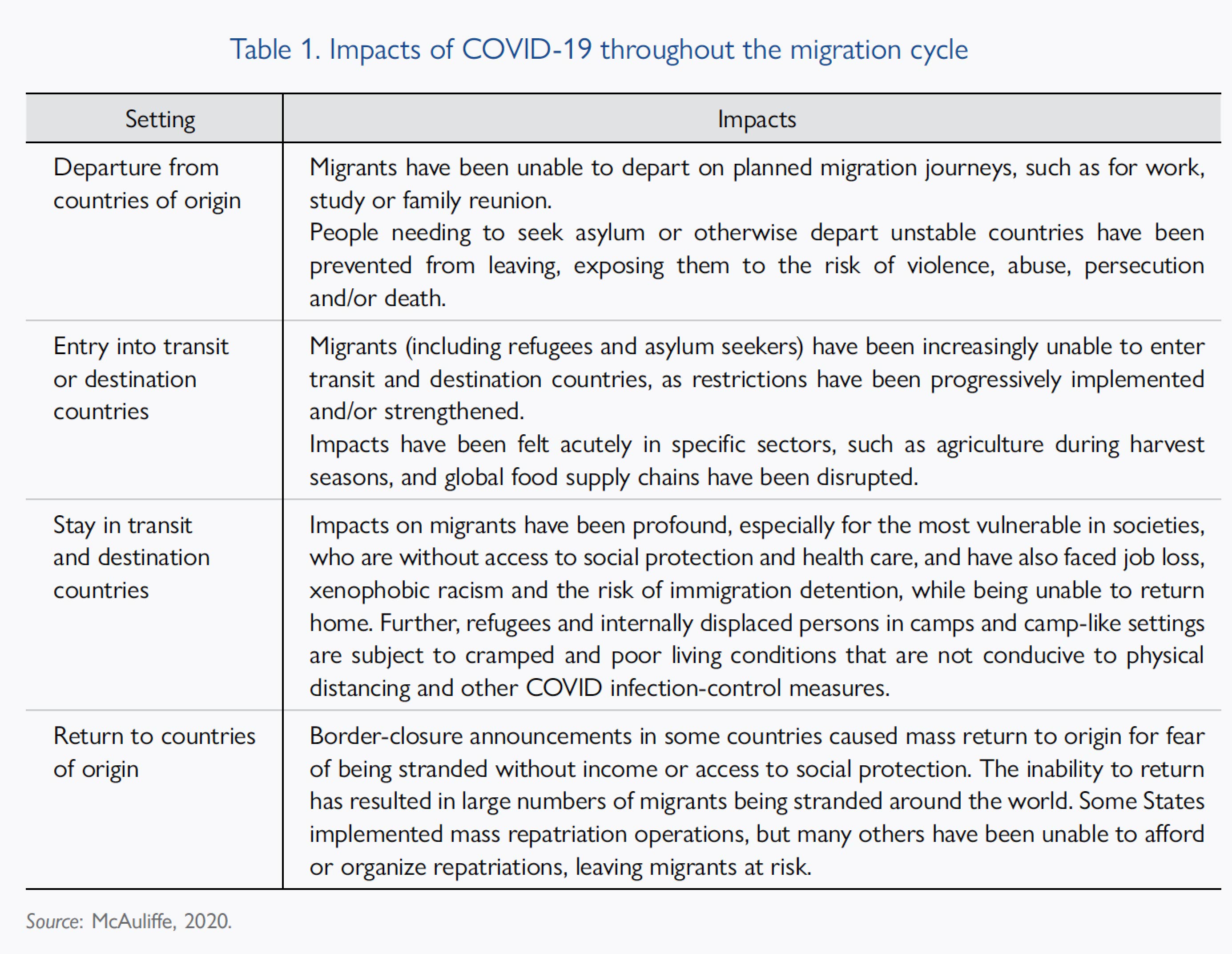COVID-19’s impact on migration
COVID-19 and transnational connectivity
COVID-19 has been the most acute pandemic in over a century and since the 1919 flu pandemic. It resulted in 10,185,374 confirmed cases and 503,863 deaths in the first six months after the virus was detected. This far exceeds other recent coronavirus pandemics, such as SARS (2003) and MERS (2012), and has seen much larger initial infection numbers compared with previous severe pandemics, such as those experienced in 1957 (so-called “Asian flu”) and 1968 (so-called “Hong Kong flu”). Evidence from previous modern-day pandemics indicates that a key response has been on preventing the movement of people (as transmitters of the virus) internationally and within countries. This has become much more challenging as globalization has deepened transnational connectivity, with global reliance on international transportation surging in recent years (see Figure 1).
The large-scale impact of the COVID-related travel restrictions becomes very clear when air passenger data are examined. We can see from long-term air passenger figures that COVID-19 travel restrictions had a major impact on both international and domestic air travel in 2020. Total air passengers carried dropped by 60 per cent from around 4.5 billion in 2019 to 1.8 billion in 2020.
Air transport passengers carried, 1980-2020

Key resources on the topic
- COVID-19’s impact on migration (WMR 2022, Ch. 5)
- COVID-19 Analytical Snapshots – Migration Research Division, IOM
- COVID-19 and the State of Global Mobility in 2020, IOM and the Migration Policy Institute (MPI)
COVID-19 impacts on migration and migrants, Dr Marie McAuliffe
COVID-19 impacts on mobility
COVID-19, travel restrictions, and international migration
Over the course of the first year of the pandemic, more than 108,000 COVID-related international travel restrictions were put in place by countries, territories or areas, in addition to the rolling implementation of internal movement restrictions within countries. Consequently, the global travel industry has been decimated by the pandemic. The initial race to implement restrictions had a significant and immediate impact on air travel around the world. By early May 2020, for example, the number of international flights had decreased by around 80 per cent globally. As a result, tourism – one of the largest industries in the world – faced a similar decline in 2020, with losses of about USD 2 trillion or 2 per cent of global GDP. Further, COVID-19 acted as a brake on international migration, with the United Nations estimating that the pandemic had slowed the growth in the stock of international migrants by around two million by mid-2020, or 27 per cent less than the growth expected.
Government responses to minimize COVID-19 transmission
Travel restrictions were only one type of measure, but one of the most significant. This was especially the case for international travel restrictions, which were implemented quickly and largely remained in place over the course of the first year. Nevertheless, when the broader suite of government responses to minimizing the transmission of COVID-19 is examined globally, we can see different patterns emerge following the initial rapid imposition of a wide range of measures between March and May 2020. The University of Oxford’s Government Response Tracker data (see Figure below) show that international travel controls related to COVID-19 consistently remained the highest throughout the period January 2020 to March 2021. Other measures, such as school closures and internal movement restrictions, have gradually declined over time, while key measures involving workplace closures, restrictions on gatherings and “stay-at-home” requirements all declined in mid-2020, only to creep back up as transmission rates increased and new variants were detected.
Government responses to minimize COVID-19 transmission, by number of countries

Impacts of COVID-19 throughout the migration cycle

Reflection questions
How did the COVID-19 pandemic slow mobility and migration?
Drawing on Figure 2, describe two government responses to minimize the spread of COVID-19.
Drawing on Table 1, find one news story that reflects how migrants were impacted by the COVID-19 pandemic.